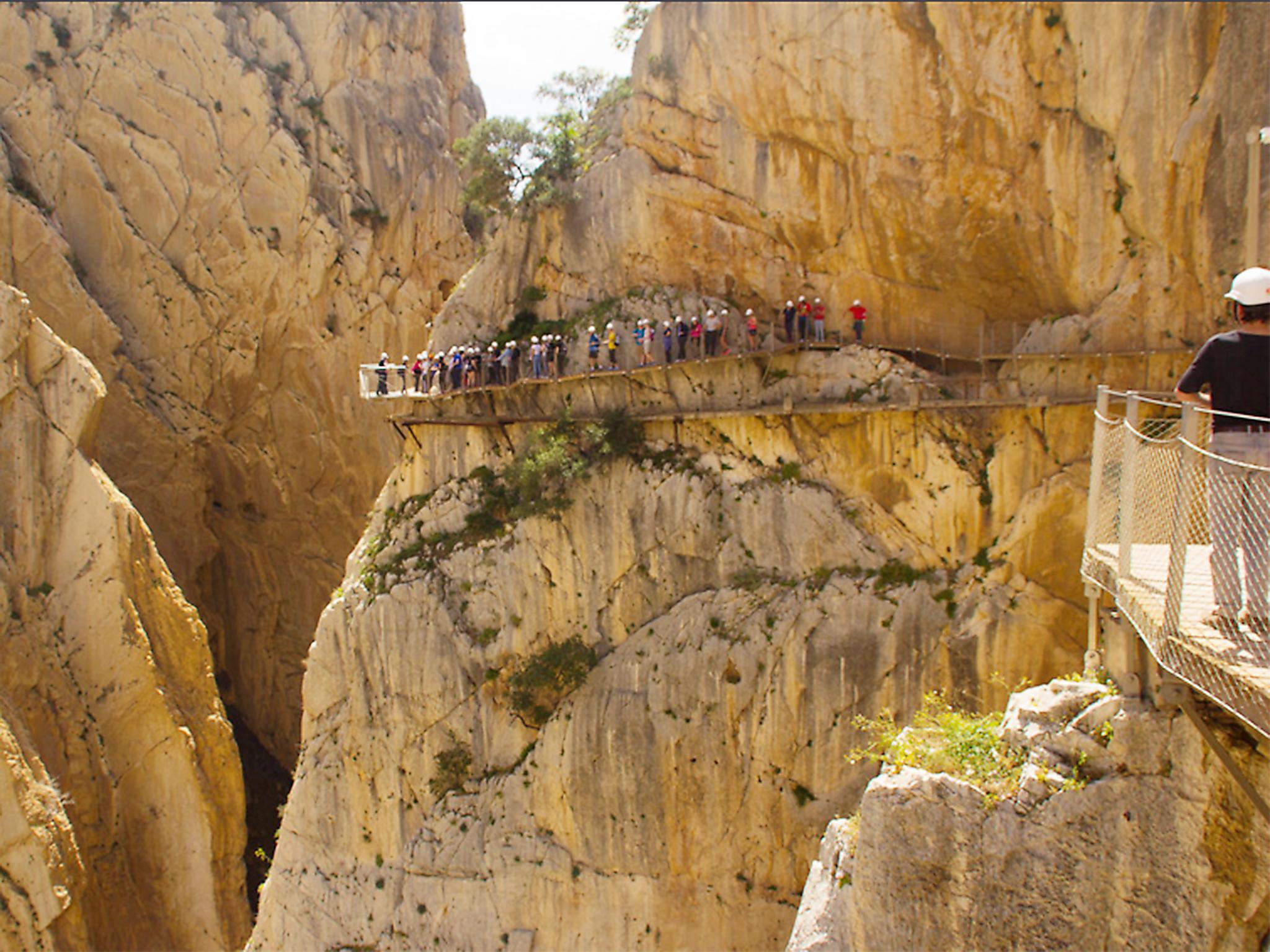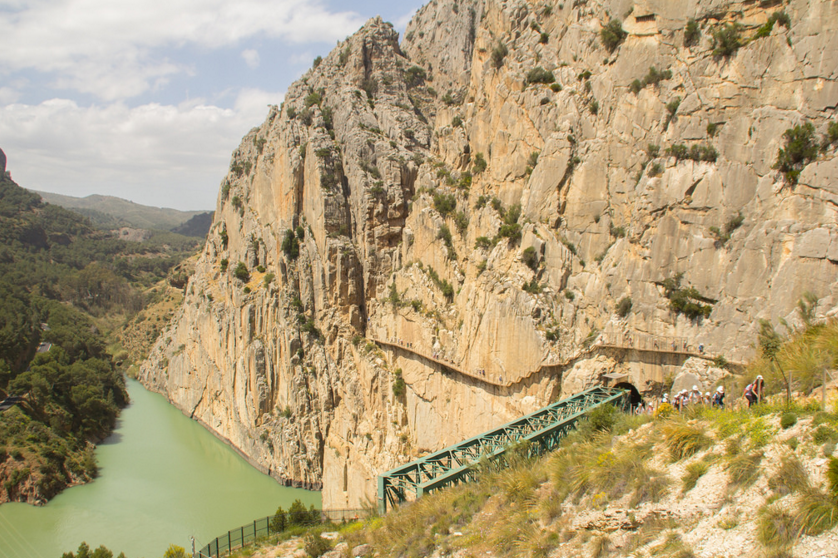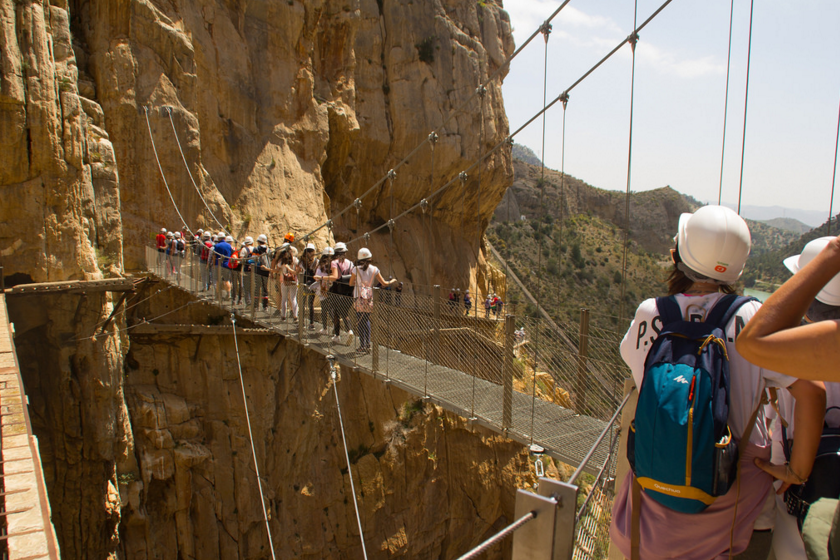The Independent's journalism is supported by our readers. When you purchase through links on our site, we may earn commission.
Caminito Del Rey: What’s it like to walk the world’s most dangerous trail?
Walking the Caminito Del Rey, the 100-year-old path known as the ‘Walkway of Death’

Your support helps us to tell the story
From reproductive rights to climate change to Big Tech, The Independent is on the ground when the story is developing. Whether it's investigating the financials of Elon Musk's pro-Trump PAC or producing our latest documentary, 'The A Word', which shines a light on the American women fighting for reproductive rights, we know how important it is to parse out the facts from the messaging.
At such a critical moment in US history, we need reporters on the ground. Your donation allows us to keep sending journalists to speak to both sides of the story.
The Independent is trusted by Americans across the entire political spectrum. And unlike many other quality news outlets, we choose not to lock Americans out of our reporting and analysis with paywalls. We believe quality journalism should be available to everyone, paid for by those who can afford it.
Your support makes all the difference.The suspension bridge on Malaga’s Walkway of Death, some 100 metres above the El Chorro gorge, quakes with every step. Hundreds of feet below me, remnants of the old path jut out of the rock face like smashed teeth, while in the pit of the ravine, a hard hat – blown off a previous mountaineer – has pitched into the water. My fingers grip white-knuckled to the rail and my guts churn over themselves in waves. The enthusiastic tour guide is beckoning me to admire the incredible rock formations in the belly of the crevasse some few thousand feet below, but I’m not looking anywhere but an inch in front of my toes. The air noticeably thins and I realise just how close my feet are to the perilous edge as, with added cinematic effect, vultures circle above, eyeing this latest nervous traveller who dares to trek this high.
The dangers of combining the natural world with human recklessness are very clear on the Caminito Del Rey, as this path is officially known. At the top of the gorge are two memorials – one to a canyoneer who drowned after their foot became stuck under the rising water, and another, larger headstone to three boys who died in 2000 after their zip wire, affixed to a cable that ran across the highest point, broke free with them on board. A metal hinge still hangs from where the old zipline tore free.
Danger seems to stalk this place – in the lap of the gorge, amid the long grass, sits an abandoned house that was once lived in by a 1970s Swiss Family Robinson. Their tranquil life living off the land was brought to an abrupt end when the father was killed intervening in a bar room brawl in nearby Ardales.
The Caminito Del Rey (or “King's Pathway”) was originally built in 1901 as part of king Alfonso XIII’s ambitious hydroelectric energy project to unify three rivers. It swiftly fell out of use and into disrepair, though – and soon became a magnet for climbers and adventurers, lured by the one-off views and the adrenaline-fuelled challenge. By the 1990s, the long-since disappeared handrails and missing chunks of concrete created eye-popping stretches of path that were only inches wide or non-existent. After a series of deaths, the government closed the walkway in 2000, though four trespassers – not put off by the €6,000 fine – still died attempting to scale the gorge in the following decade.
After four years of extensive renovations, a new walkway opened up in 2015, from which the risks of the old path can still be seen directly beneath. Huge chunks are missing, leaving bare, rusted poles. At other points, the old walkway sits directly alongside the new one, giving visitors an even closer feel for the daredevil nature of the previous trail. This, along with the gargantuan precipices and hair-raising viewing platform, are the real draws for adrenaline-junkie tourists.
The new path is genuinely like few other places on earth. At its highest, it’s the closest you can come to feeling like an Indiana Jones action hero without actually having to retrieve a lost treasure from the forces of evil. But “tourist attraction” and “avoidable deaths” aren’t easy bedfellows; in refurbishing the walkway, the authorities understandably removed a huge amount of the previous risk.

In truth, my only clear and present danger on the revamped Caminito Del Rey is a group of college kids behind me who are impatiently waiting for the Brit abroad to get his pasty legs moving. The suspension bridge boasts the best views of the five-mile walkway and I’m clearly delaying their window for some selfie time. But it’s their loss. It’s worth pausing to take in the yawning crevasse at every other step – even if it is fuelled by cowardice rather than a desire to capture the Instagram-friendly views.
The rebuilt trail may have lost some of its edge, but those with a fear of heights might think twice before taking it on – there’s only so much that bleached wooden flooring, safety notices and paid staff can do to distract from the fact that you’re unnaturally high up, and on the side of a cliff. Still, legions of nature fans and vertigo nuts are keen to check it out. So much so that booking in advance is required and only 600 walkers, all wearing hard hats, are allowed up on any one day.

The entrance is a 100m claustrophobic borehole through the rock face, before the path gently ascends past azure reservoirs and small thickets. Those who dare to tackle the walkway are rewarded with all sorts of wildlife: griffin vultures, golden eagles and honey buzzards fly above, wildflowers and fossils line the pathways and native frogs and toads (still not used to human cohabitation) blithely bake near rocky pools along the way. As the path snakes upwards, you quickly find yourself cheek-to-cheek with the cliff face, and the Guadalhorce river a long way below.
At the highest point you can stand and take pictures on a spine-tingling glass-bottomed viewing platform and – if your breakfast allows – dare to look down. If you can open your eyes, that is.
Travel essentials
Getting there
The closest airport is Malaga. Routes from the UK are plentiful – airlines include Monarch, British Airways and easyJet. The Caminito del Rey is 60km from the city. You can get the train – the stop is El Chorro stop at Alora, where the trail ends. From there, there’s a shuttle bus to the start of the trail.
Staying there
It’s easiest to stay in Malaga. Room Mate Larios has doubles from £87, room only.
More information
The Caminito is now open until the end of September (it opened at the end of April). Booking is mandatory and fills up well in advance. Entry costs €10.
Join our commenting forum
Join thought-provoking conversations, follow other Independent readers and see their replies
Comments